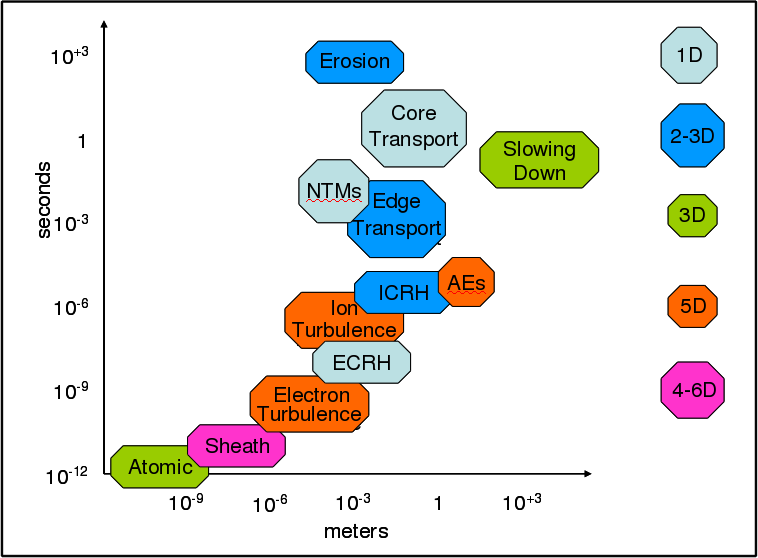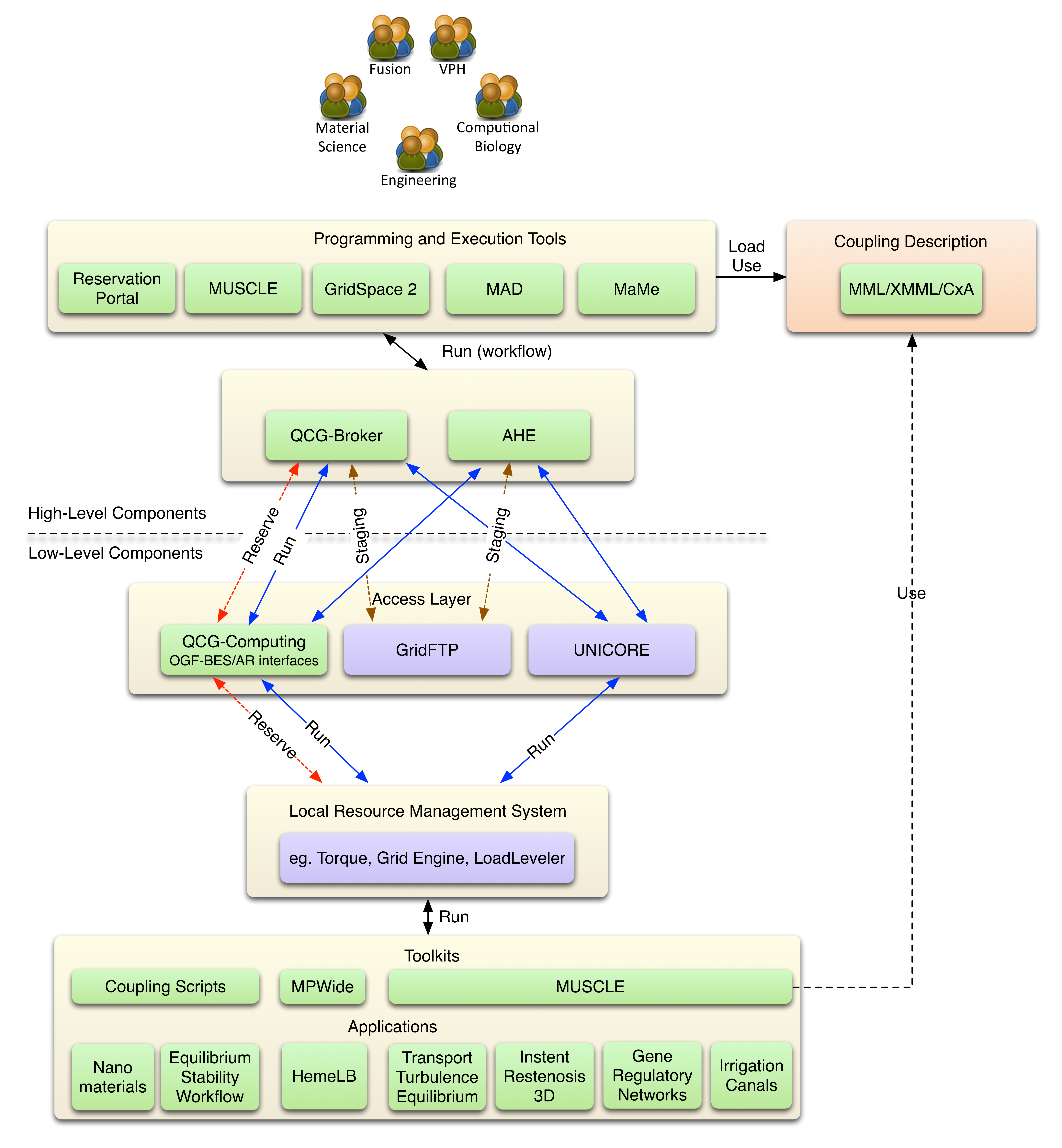Summary
Today scientists and engineers are commonly faced with the challenge of modelling, predicting and controlling multiscale systems which cross scientific disciplines and where several processes acting at different scales coexist and interact. Such multidisciplinary multiscale models, when simulated in three dimensions, require large scale or even extreme scale computing capabilities. The MAPPER project develops computational strategies, software and services for distributed multiscale simulations across disciplines, exploiting existing and evolving European computing e-infrastructures through the joint MAPPER, EGI and PRACE Task Force (encrypted page).
Objectives
Driven by seven challenging applications from five representative scientific domains (fusion, clinical decision making, systems biology, nano science, engineering), MAPPER deploys a computational science environment for distributed multiscale computing on and across European e-infrastructures. By taking advantage of existing software and services, as delivered by EU and national projects, MAPPER will result in high quality components for today's e-infrastructures. We develop tools, software and services that permit loosely and tightly coupled multiscale computing in a user friendly and transparent way. We integrate our applications into the MAPPER environment, and demonstrate their enhanced capabilities.
Action plan
MAPPER integrates heterogeneous infrastructures for programming and execution of multiscale simulations. We reuse as much of the existing infrastructural and software solutions as possible. The MAPPER solutions is developed on top of existing e-infrastructures without the necessity to modify already deployed components. The functionality to be delivered is realized as extensions to existing e-infra-structures. The integration is done using well defined APIs and standard based interfaces, thus reducing potential impact of changes on middleware level components.
Joint Research activities
The application portfolio is adapted to the MAPPER infrastructure. Our approach is that applications are up and running from the start of the project, with existing, easily adaptable and deployable tools in the fast track; the deeper track then produces enhancements which are fed into the user level fast track as and when ready. A number of programming and execution tools, dedicated to distributed multiscale computing, are developed. In the first phase of the project, the applications will have to rely on explicit coding of their multiscale simulations, but gradually programming tools are delivered that assist in this task. JRA tools allow interaction between software components from different e-infrastructures in a hybrid way.
User communities
MAPPER is driven by seven exemplar applications from five user communities (virtual physiological human, computational biology, fusion, hydrological engineering, nano material science), and these communities are specifically targeted. However, our solutions are generic and will enable distributed multiscale computing for any multiscale model fitting into our paradigm, and MAPPER therefore opens up to other user communities as well.
Figure 1: A Schematic Diagram of the MAPPER Computational Science Infrastructure.
Click here to enlarge Figure 1.
Networking activities
We create and maintain a stable management of the project, with strong internal and external communication and development of realistic plans for uptake and sustainability of MAPPER results during and after the lifetime of the project. We focus on targeted dissemination actions and a foresight study addressed to policy makers on the concepts and technologies that facilitate multi-scale modelling approaches on large e-infrastructures.
Service activities
We distinguish two layers of services constituting the MAPPER environment. Users and applications communicate with services belonging to the interoperability layer, an abstract layer to grid resources managed by different middleware stacks. The interoperability services are responsible for providing concurrent access to resources controlled by different services synchronizing and orchestrating the execution of applications in the grid.
Multiscale loosely and tightly coupled simulations are controlled by a broker and underlying computing access services developed in the FP6-ICT QosCosGrid project (http://www.qoscosgrid.org/). The broker is integrated with underlying middleware and its scheduling and co-allocation algorithms are tuned for specific needs of multiscale applications. Many of the services that we wish to use have been developed individually and do not necessarily interoperate. We ensure that these services do talk to each other where appropriate. We start working on application deployment as early as possible in the project. We therefore adopt a twin track approach in our service development activities. The fast track adapts, integrates and deploys a minimal set of infrastructure components to enable coupling of multi-scale applications. The deep track will do so for the higher level services required to realise the full and integrated MAPPER infrastructure, which will enable the coupling and launching of multi-scale component codes. MAPPER services evolve on the basis of a regular cycle of top-down and bottom-up analysis of existing e-infrastructure, MAPPER building blocks as well as new requirements defined by our multiscale user communities.

